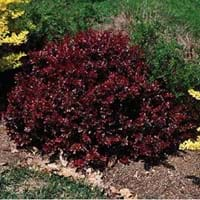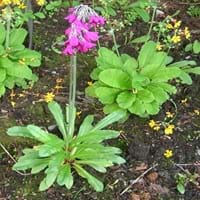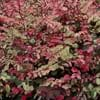Life Span
Perennial
Perennial
Origin
China
Hybrid origin
Types
European Barberry, Japanese Barberry,
Not available
Habitat
Hillside, Woods
Damp forests, Woodland Garden
USDA Hardiness Zone
Not Available
3-8
Sunset Zone
Not Available
Not Available
Habit
Oval or Rounded
Rosette/Stemless
Minimum Height
Not Available
Minimum Width
Not Available
Flower Color
Yellow
Yellow, Red, Purple, Orange
Flower Color Modifier
Not Available
Not Available
Fruit Color
Red
Not Applicable
Leaf Color in Spring
Green, Dark Green
Green
Leaf Color in Summer
Dark Green
Green
Leaf Color in Fall
Dark Green
Green
Leaf Color in Winter
Dark Green
Light Green
Leaf Shape
Oval
Oblong elliptic
Plant Season
Spring, Summer, Fall, Winter
Summer, Fall
Sunlight
Full Sun, Partial Sun, Partial shade
Full Sun, Partial Sun, Partial shade
Growth Rate
Medium
Medium
Type of Soil
Clay, Loam, Sand
Loam
The pH of Soil
Acidic, Neutral, Alkaline
Neutral
Soil Drainage
Well drained
Average
Bloom Time
Spring, Late Spring
Summer, Late Summer, Early Fall, Fall
Tolerances
Drought
Drought
Where to Plant?
Ground
Ground, Pot
How to Plant?
Seedlings, Transplanting
Divison, Seedlings
Plant Maintenance
Medium
Medium
Watering Requirements
Requires regular watering
Do not let dry out between waterings, Keep ground moist, Keep the Soil well drained, Requires regular watering
In Summer
Lots of watering
Lots of watering
In Spring
Moderate
Moderate
In Winter
Average Water
Average Water
Soil pH
Acidic, Neutral, Alkaline
Neutral
Soil Type
Clay, Loam, Sand
Loam
Soil Drainage Capacity
Well drained
Average
Sun Exposure
Full Sun, Partial Sun, Partial shade
Full Sun, Partial Sun, Partial shade
Pruning
Remove dead leaves, Remove deadheads
Remove damaged leaves, Remove dead branches, Remove dead leaves
Fertilizers
All-Purpose Liquid Fertilizer
All-Purpose Liquid Fertilizer
Pests and Diseases
Verticillium Wilt
Dry root rot, Leaf spot
Plant Tolerance
Drought
Drought
Flower Petal Number
Single
Single
Showy Bark
No
Insignificant
Foliage Texture
Medium
Coarse
Foliage Sheen
Glossy
Matte
Attracts
Not Available
Insects
Allergy
Itchiness, Stomach burn
Not Available
Aesthetic Uses
Beautification
Beautification, Borders, Landscape Designing, Showy Purposes
Beauty Benefits
Not Available
Not Available
Environmental Uses
Air purification
Air purification, Food for insects, Versatility
Medicinal Uses
Diarrhea, High blood pressure, Menstrual Disorders, Upset stomach, Urinary tract problems
Not Available
Part of Plant Used
Fruits
Flowers, Leaves
Other Uses
Used As Food, Used as Ornamental plant, Used for fragrance
Decoration Purposes, Medicinal oil, Showy Purposes, Used as Ornamental plant, Used for its medicinal properties
Used As Indoor Plant
No
Yes
Used As Outdoor Plant
Yes
Yes
Garden Design
Hedges, Screening, Wind Break
Edging, Feature Plant, Groundcover, Mixed Border
Botanical Name
BERBERIS soulieana
Primula beesiana
Common Name
Barberry
Candelabra Primrose, Primrose
In Hindi
Burberry
candelabra primrose
In German
Burberry
Kerzenleuchter Primel
In French
Burberry
candélabre primevère
In Spanish
Burberry
Primula beesiana
In Greek
Burberry
μανουάλια primrose
In Portuguese
Burberry
prímula candelabros
In Polish
kwaśnica
kandelabry pierwiosnka
In Latin
Barberry
candelabra Primrose
Phylum
Magnoliophyta
Magnoliophyta
Class
Magnoliopsida
Magnoliopsida
Order
Ranunculales
Myrtales
Family
Berberidaceae
Onagraceae
Clade
Angiosperms, Eudicots
Angiosperms, Eudicots, Rosids
Tribe
Not Available
Onagreae
Subfamily
Not Available
Onagroideae
Number of Species
Not Available
Properties of Barberry and Candelabra Primrose
Wondering what are the properties of Barberry and Candelabra Primrose? We provide you with everything About Barberry and Candelabra Primrose. Barberry has thorns and Candelabra Primrose doesn't have thorns. Also Barberry does not have fragrant flowers. Barberry has allergic reactions like Itchiness and Stomach burn and Candelabra Primrose has allergic reactions like Itchiness and Stomach burn. Compare all the properties and characteristics of these two plants. Find out which of these plant can be used as indoor plant. If you are interested to decorate your house and garden, find out aesthetic uses, compare them and select the plant which will beautify your surrounding. Along with beautification, try comparing medicinal and edible uses of Barberry and Candelabra Primrose and you can choose the plant having best and most benefits.
Season and Care of Barberry and Candelabra Primrose
Season and care of Barberry and Candelabra Primrose is important to know. While considering everything about Barberry and Candelabra Primrose Care, growing season is an essential factor. Barberry season is Spring, Summer, Fall and Winter and Candelabra Primrose season is Spring, Summer, Fall and Winter. The type of soil for Barberry is Clay, Loam, Sand and for Candelabra Primrose is Loam while the PH of soil for Barberry is Acidic, Neutral, Alkaline and for Candelabra Primrose is Neutral.
Barberry and Candelabra Primrose Physical Information
Barberry and Candelabra Primrose physical information is very important for comparison. Barberry height is 120.00 cm and width 120.00 cm whereas Candelabra Primrose height is Not Available and width Not Available. The color specification of Barberry and Candelabra Primrose are as follows:
Barberry flower color: Yellow
Barberry leaf color: Green and Dark Green
Candelabra Primrose flower color: Yellow, Red, Purple and Orange
- Candelabra Primrose leaf color: Green
Care of Barberry and Candelabra Primrose
Care of Barberry and Candelabra Primrose include pruning, fertilizers, watering etc. Barberry pruning is done Remove dead leaves and Remove deadheads and Candelabra Primrose pruning is done Remove damaged leaves, Remove dead branches and Remove dead leaves. In summer Barberry needs Lots of watering and in winter, it needs Average Water. Whereas, in summer Candelabra Primrose needs Lots of watering and in winter, it needs Average Water.





